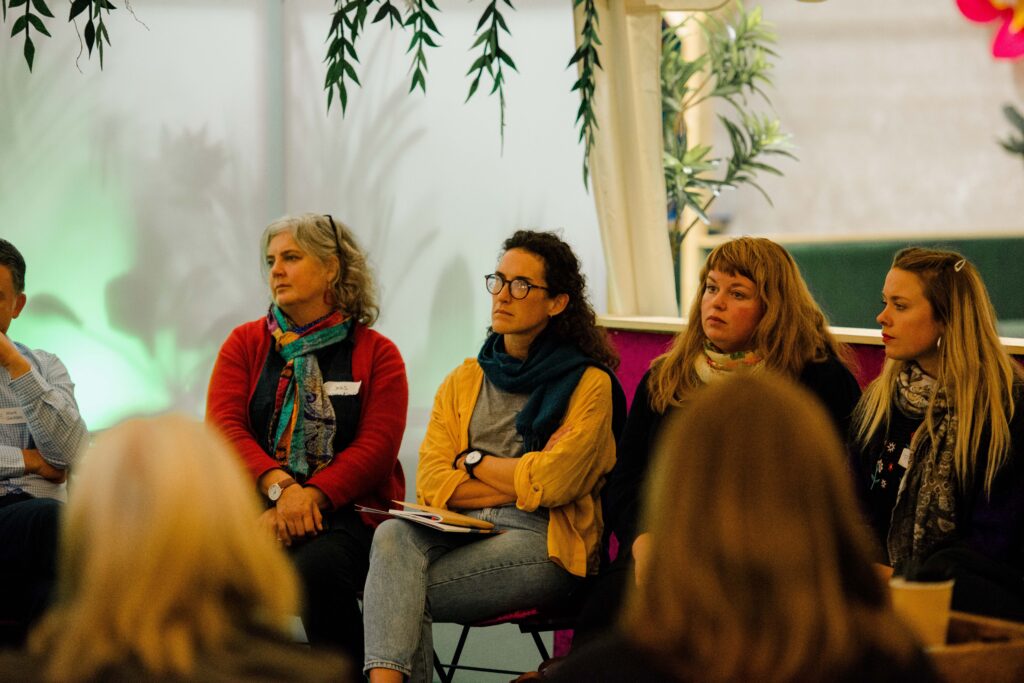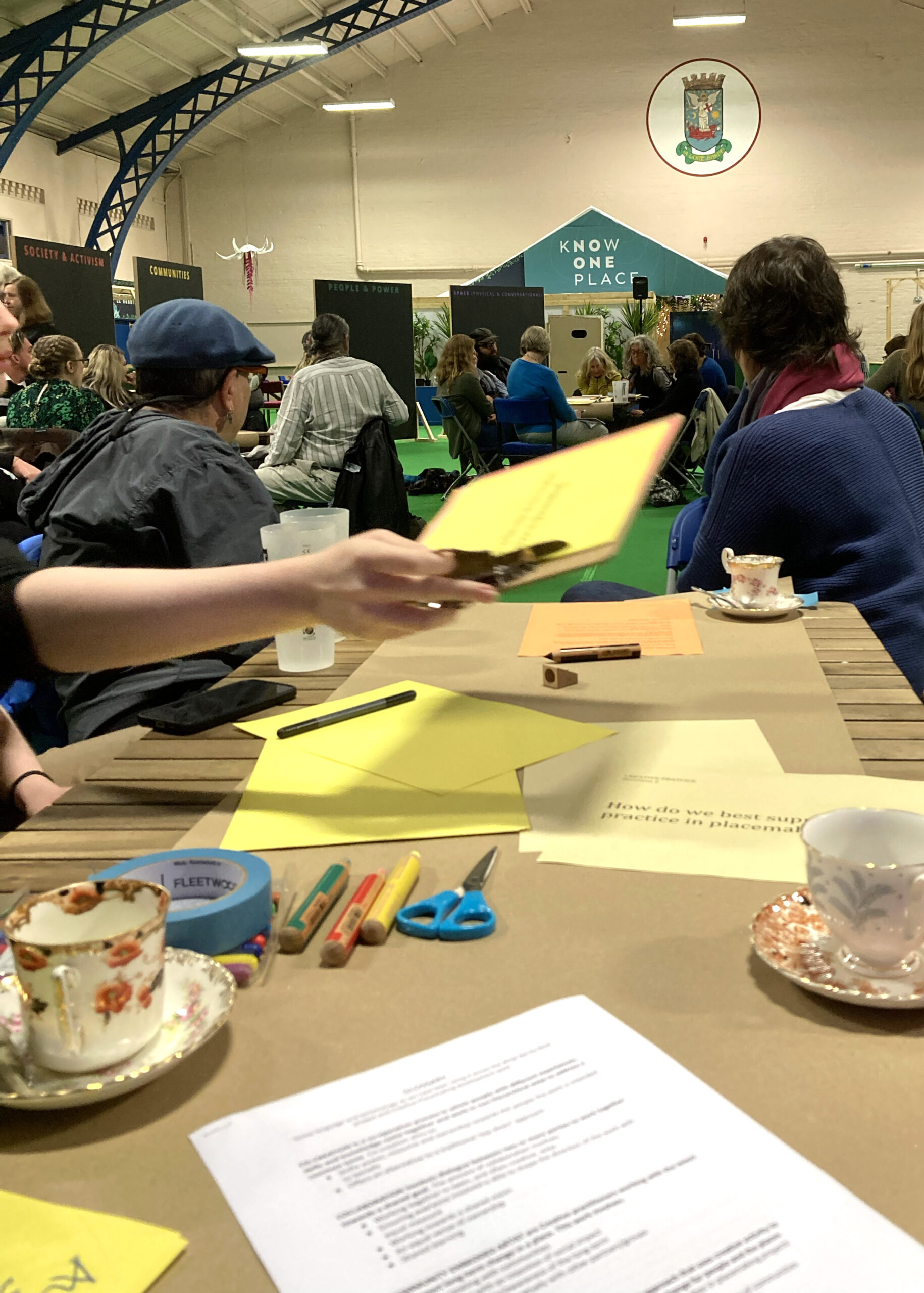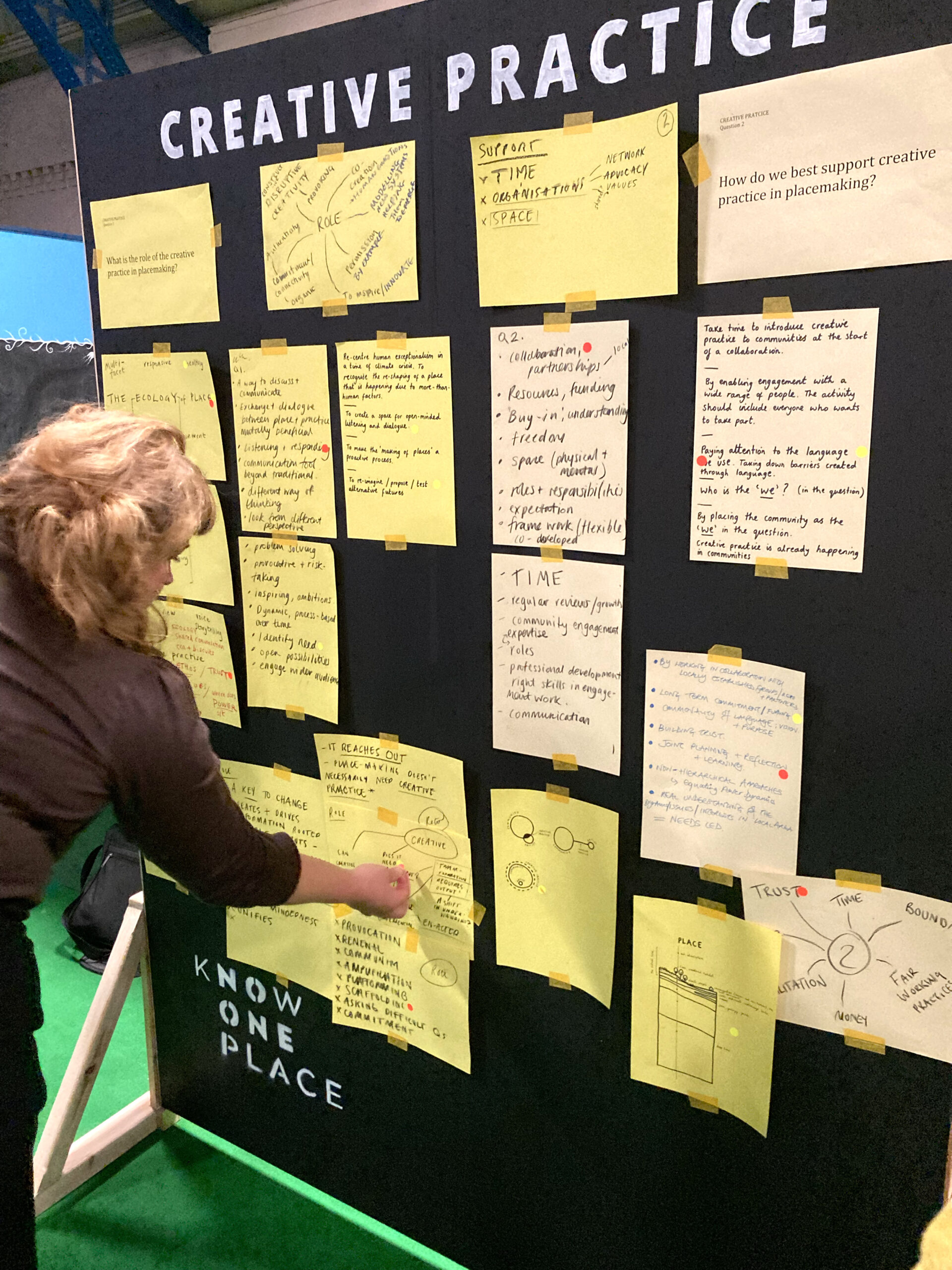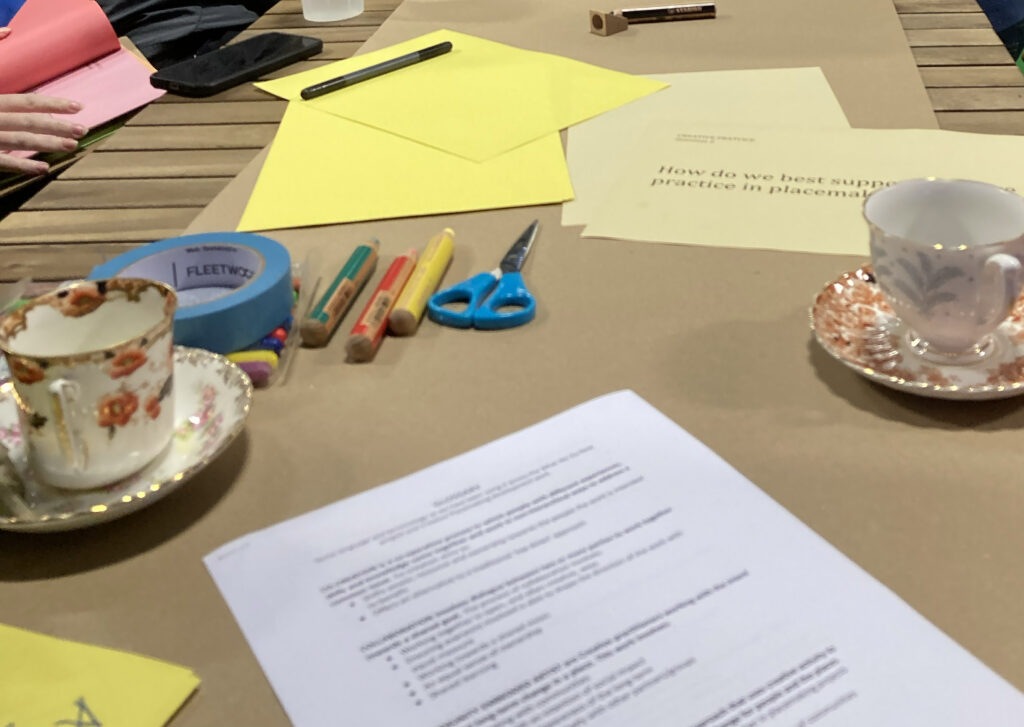kNOw One Place Reflections: Travelogue from Dumfries

Linn Hontvedt – Artist
A clear and bright week in September (sprinkled with some mandatory rain), my travel companion Johanne and myself, Linn, were fortunate to come from Tønsberg in southern Norway, to visit Dumfries for the Know One Place conference. To place us in this setting and give a bit of background for why we came to Dumfries, Johanne is the director of Vestfold Art Centre in Tønsberg, and I work as an artist associated with the Art Centre. Vestfold Art Centre is an artist-run gallery, resource and development centre for the region of Vestfold, also managing regional art in public space and arts provision in school.
For several years, Vestfold Art Centre and The Stove have had an ongoing exchange and collaboration. In 2019 I had the pleasure to work with the two Dumfries and Galloway artists Jo Hodges and Robbie Coleman on a place development project in Tønsberg, GIPT.
Already at that time I understood that the artists in the region of Dumfries and Galloway had a specific way of working in a social and inclusive way with their local communities.
Back to the kNOw One Place conference, we spent two intense days in a row, where we got to meet lovely people running amazing projects and great initiatives and be in the middle of sharing thoughts and discussions on creative placemaking.
In Norway, creative placemaking is not a common term – although a familiar direction of artistic practice. To grasp and understand the full meaning of all aspects that creative placemaking is touching upon, I found myself translating all input and output throughout the discussions in at least three ways;
- Translation as the direct linguistic meaning of words and terms (some words were even dissembled in the group work!)
- Translation as in comparing topics being discussed into our society; what would a familiar situation/ society/ group look like in Norway?
- Translation of topics being discussed, that were not familiar, but then try to understand what issues they were touching upon, and further think of how/if it may be a way of seeing or doing things in Norway.
It was a mind-blowing amount of food for thought during these two days, and it took me a while digesting everything.


Although I mentioned that creative placemaking as a term is not commonly used in Norway, this way of working with local societies is a common artistic practice here as well. There are many creative, artists, architects and society workers that work within their local community on good and well-functioning projects. Especially in the larger towns, but also elsewhere. It has furthermore become a valued way of artistic practice within the art education system. As an example, The Art Academy in Oslo has established an MFA in “art and public space”, where students are challenged to expand ways of seeing and working with all aspects of public space.
In practice, what we can look at as creative placemaking projects in Norway, is seen both as top-down initiated projects and grass root initiatives. In general, and perhaps a challenge within culture funding by and large, top-down-projects may run into conflicts of interests, not understanding its target group and communication issues, whereas grass root initiatives that may cope better with the mentioned challenges, they struggle for funding. Although the will for project funding in Norway is present, to mediate the importance and need for long term funding to build up and achieve results is difficult.
Further on, seen from my point of view, in projects where artists work within communities here in Norway, we are in a learning process – and I think we should not stop this process. As mentioned at kNOw One Place several times, there is a certain sensibility and awareness needed to contribute in a constructive way.
What I haven’t seen in Norway is the type of organization that The Stove represents, that is building bridges and interlinking different initiatives – and within that, the capability to co-work and learn from each other and be a fully functioning ecosystem.

In our local society there is a rather good sense of communication and dialogue across sectors, but there are few actual meeting points. Initiatives for sharing will generally be formal presentations of finished, successful projects, but not to actually think together.
In the very last part of the conference, “Actions for change” where our task was to write down what actions we could do, we made our own board with thoughts and actions. Our starting point: Invite different sectors to think together!
Thank you so much for having us